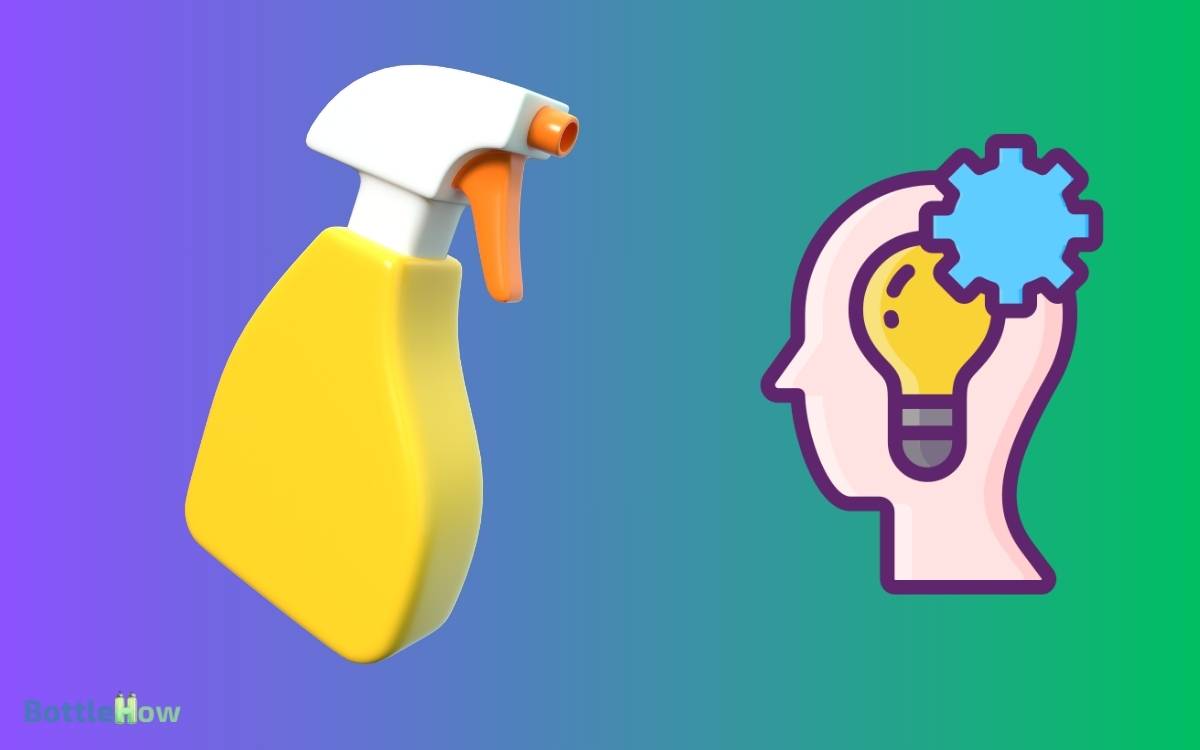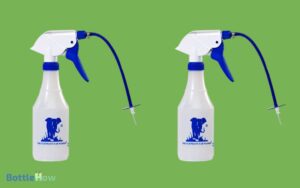Who Invented Spray Bottles? Dr. Jules Montenier!
You might be surprised to learn that the modern spray bottle, a cornerstone of efficient liquid dispensing, originated in the mid-20th century. Initially, people relied on basic tools like sponges and rudimentary pumps.
However, the atomizer’s creation during the Industrial Revolution set the stage for modern spray bottles. These bottles featured a trigger mechanism allowing for precise, controlled release of liquids.
Over time, materials evolved from glass and metal to durable, cost-effective plastic, driving adoption across various industries. If you explore further, you’ll uncover fascinating details on its design innovations and widespread impact.

Key Takeaways
Early Liquid Dispensing Methods
Before the invention of modern spray bottles, early liquid dispensing methods relied on basic manual tools like sponges, brushes, and rudimentary pumps. These tools were essential for various tasks, from cleaning surfaces to applying treatments.
Sponges and brushes required you to manually soak and spread liquids, often leading to uneven application and wasted resources.
Rudimentary pumps, while more advanced, still needed significant effort and lacked precision. They often couldn’t disperse fine mists, making them inefficient for tasks requiring even coverage.
Understanding these early methods highlights the challenges people faced in achieving efficiency and consistency.
By examining this historical context, you gain insight into the evolution of tools designed for better service and effectiveness in daily tasks.
The Need for Better Solutions
Recognizing the limitations and inefficiencies of early liquid dispensing methods, innovators sought better solutions to achieve more consistent and precise application.
You understand that early methods often led to uneven distribution, waste, and frustration for users.
The need for enhanced accuracy and control became apparent, especially in fields like cleaning, gardening, and personal care.
By focusing on the end-user experience, you can appreciate the drive to develop mechanisms that would minimize waste and maximize efficiency.
Innovators aimed to create tools that wouldn’t only improve the application process but also guarantee that each drop of liquid served its intended purpose effectively.
This quest for better solutions laid the groundwork for significant advancements in liquid dispensing technology, ultimately benefiting those you serve.
Birth of the Atomizer
You should consider how early atomizer designs emerged as inventive solutions during the Industrial Revolution.
These designs, often simple yet effective, harnessed new engineering techniques and materials. Their development marked a significant technological leap, setting the stage for modern spray bottles.
Early Atomizer Designs
The inception of the atomizer dates back to the early 19th century, when inventors sought new ways to dispense liquids in fine mist form for medical and cosmetic applications.
You can trace the earliest designs to devices like the perfume atomizer, which used a bulb and nozzle to create a mist.
Each squeeze of the bulb drew liquid from a reservoir, pushing it through a tube and dispersing it as fine droplets.
These early atomizers demonstrated a keen understanding of fluid dynamics, employing simple yet effective mechanisms to achieve uniform dispersion.
By examining these designs, you’ll appreciate the ingenuity that laid the groundwork for modern spray bottles, allowing for precise, controlled application of various substances to better serve others’ needs.
Industrial Revolution Influence
Harnessing the technological advancements of the Industrial Revolution, inventors refined atomizer designs, which greatly expanded their applications beyond medical and cosmetic uses.
You’ll see how industrial machinery enabled mass production, ensuring atomizers were more accessible and affordable.
Innovations in materials and precision engineering allowed for the development of more efficient, reliable spray mechanisms.
These improvements weren’t just pivotal technological feats; they served practical needs in agriculture, cleaning, and various industrial processes.
The ability to disperse liquids finely and evenly became essential for tasks ranging from pest control to sanitation.
First Modern Spray Bottle
In the mid-20th century, the first modern spray bottle emerged, revolutionizing how liquids were dispensed in both household and industrial settings.
You can see how this innovation simplified tasks, making cleaning, gardening, and even industrial applications more efficient.
The design incorporated a trigger mechanism that allowed for precise, controlled release of liquids, thereby minimizing waste.
This pivotal development enabled users to apply solutions evenly and effectively, enhancing productivity.
The spray bottle’s introduction marked a significant improvement over previous methods, which often lacked precision and convenience.
Innovations in Design
You can observe significant innovations in spray bottle design. Especially in adjustable spray nozzles, ergonomic grip design, and the evolution of trigger mechanisms.
These advancements not only enhance user comfort but also improve functionality and efficiency.
Adjustable Spray Nozzles
Adjustable spray nozzles revolutionized spray bottle design by providing users with the flexibility to control the spray pattern and intensity.
This innovation allows you to switch between a fine mist for delicate tasks and a concentrated stream for more demanding applications.
Such adaptability is essential for tasks ranging from household cleaning to gardening, enabling you to serve others more effectively.
| Spray Pattern | Use Case | Benefit |
|---|---|---|
| Fine Mist | Delicate surfaces | Protects and covers evenly |
| Medium Spray | General cleaning | Balanced application |
| Jet Stream | Tough stains | High-pressure cleaning |
| Fan Spray | Gardening | Broad coverage |
| Adjustable | Versatile tasks | Customizable use |
Ergonomic Grip Design
Ergonomic grip design enhances user comfort and efficiency by reducing hand strain and improving control during prolonged use.
You’ll appreciate how these grips are crafted to fit the natural contours of your hand, promoting a relaxed grip and minimizing fatigue.
This thoughtful design is particularly beneficial for those who use spray bottles frequently, such as cleaners, gardeners, and healthcare workers.
Materials play a significant role, with soft, non-slip textures ensuring a secure hold even when wet.
Enhanced grips also help in maintaining precision, allowing you to direct the spray accurately. By focusing on ergonomic design, manufacturers aim to create tools that not only perform well but also support your well-being while serving others effectively.
Trigger Mechanism Evolution
The evolution of the trigger mechanism in spray bottles has introduced numerous design innovations aimed at enhancing efficiency and user experience. These advancements have improved the consistency and control of liquid dispensation, making spray bottles more reliable for various applications. Understanding how a spray bottle works involves recognizing the role of air pressure and mechanical components in drawing liquid upward and expelling it as a fine mist or stream. Modern designs also incorporate ergonomic features and adjustable nozzles to optimize functionality for different user needs.
You’ll notice how modern triggers incorporate smooth, effortless actions, reducing hand fatigue during extended use.
Advanced designs now feature adjustable spray patterns, allowing for precise control over the dispersion of liquids, which is essential for various applications, from cleaning to gardening.
Additionally, some triggers include lock mechanisms to prevent accidental sprays, ensuring safety and conserving product.
Innovations in materials have also played a role, with durable, corrosion-resistant components extending the lifespan of the spray bottles.
These thoughtful enhancements demonstrate a commitment to improving functionality and user satisfaction, ultimately serving those who rely on these tools for their daily tasks.
Key Figures in Development
Several key innovators played pivotal roles in the development of spray bottles. Each contributed unique advancements that propelled the technology forward.
- Dr. Jules Montenier: In 1947, Dr. Montenier patented a non-clogging spray valve. This improvement enhanced the reliability and usability of spray bottles, making them more practical for consumer use.
- Robert H. Abplanalp: In 1953, Abplanalp invented the first mass-produced aerosol valve. This innovation revolutionized the industry by enabling the widespread use of spray technology in various sectors.
- Victor DeLorenzo: In the early 1980s, DeLorenzo’s work on trigger sprayers introduced ergonomic designs. These designs enhanced user comfort and efficiency, making spray bottles easier to use for extended periods.
These innovators’ contributions have greatly shaped the spray bottle technology you use today.
Evolution of Materials
Over time, manufacturers have shifted from using glass and metal to more lightweight and durable plastics, greatly impacting the functionality and cost-effectiveness of spray bottles.
This change has not only reduced production costs but also enhanced the user experience by making bottles easier to handle and less prone to breaking.
Additionally, plastic materials have allowed for more intricate designs and mechanisms, improving spray efficiency.
| Material | Durability | Cost-Effectiveness |
|---|---|---|
| Glass | High | Low |
| Metal | Medium | Medium |
| Plastic | High | High |
In this shift, plastics have proven superior in both durability and cost-effectiveness, making them the preferred choice.
By adopting plastic materials, manufacturers can produce spray bottles that are both practical and economical, ultimately serving you better.
Impact on Industries
Spray bottles have revolutionized various industries by enhancing efficiency, reducing waste, and improving user convenience.
In the healthcare sector, they enable precise application of disinfectants, ensuring sterilization and safety.
For agriculture, spray bottles allow for the accurate distribution of pesticides and nutrients, safeguarding crops and boosting yields.
The beauty industry benefits from the controlled dispensing of products like hair sprays and perfumes, promoting consistency and customer satisfaction.
Here are three key impacts:
- Healthcare: Improved sanitation through targeted disinfectant application.
- Agriculture: Enhanced crop protection with efficient pesticide and nutrient distribution.
- Beauty: Consistent product application for better user experience.
These advancements highlight the spray bottle’s essential role in improving operational efficiency across diverse fields.
Popularization in Households
The widespread adoption of spray bottles in households has greatly enhanced convenience and efficiency in tasks ranging from cleaning to gardening.
You’ll find that spray bottles simplify the application of cleaning solutions, ensuring even distribution and reducing waste. They’re also invaluable for watering plants, allowing for precise moisture control.
In addition, spray bottles help in pest control by enabling the application of insecticides and repellents directly to affected areas.
Their user-friendly design minimizes physical strain and maximizes reach, making household chores more manageable.
With refillable options, you can also reduce plastic waste, aligning with sustainable practices. Overall, spray bottles have become essential tools, optimizing daily routines and improving the quality of home care.
Recent Technological Advances
With the advent of advanced materials and ergonomic designs, recent technological advances in spray bottles have greatly enhanced their functionality and user experience.
These innovations not only make the bottles more efficient but also guarantee ease of use, especially for those who aim to serve others effectively.
- Material Durability: Modern spray bottles use high-quality, eco-friendly materials that resist wear and tear, ensuring longevity and sustainability.
- Ergonomic Design: Enhanced grip and trigger mechanisms reduce hand fatigue, making it easier for users to spray continuously without discomfort.
- Adjustable Spray Patterns: Advanced nozzles now offer customizable spray patterns, allowing for precision in various applications, from cleaning to gardening.
These advancements reflect a commitment to improving everyday tools for better performance and user satisfaction.
Conclusion
You’ve seen how spray bottles have revolutionized our world from early liquid dispensing methods to today’s advanced designs. Their journey, marked by constant innovation, has impacted industries and households alike.
With modern materials and technology, spray bottles now seem almost magical in their efficiency.
As you look at your own spray bottle, remember it’s more than just a tool—it’s the result of centuries of ingenuity and progress, making everyday tasks infinitely easier.






